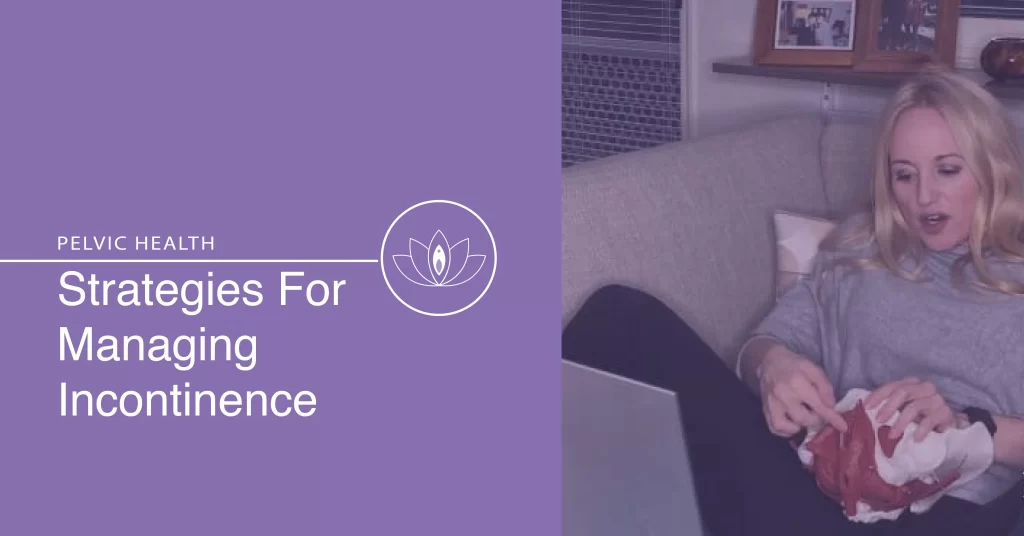Are you looking for strategies to help manage and overcome incontinence? Following our pelvic floor exercise series on YouTube, we were asked to do a video sharing strategies to help with incontinence. If you are incontinent and are trying to regain control then this video may help.
We discuss the micturition and guarding reflexes (which you can read about on our urinary incontinence page), and review some strategies to reduce the symptoms of overactive bladder and mixed incontinence while working to build the pelvic floor strength to prevent stress incontinence. Recovery from incontinence takes time. Sometimes there are big improvements in a very short time, and at other times, it can feel like no progress is being made.
It is really important to stick with it and don’t lose heart. Your body craves function and finds healing an irresistible force. If you can learn to listen to the subtle language of your body, you can communicate back by providing the right balance of movement, nutrition and meditation. The results are empowering!
If you have questions or would like to see a video explaining something specific, please join our community or contact us directly with your question. Feel free to like, share, comment or subscribe to our channel if you feel so inclined.
Help to Break the Taboo
If you are suffering from stress incontinence, overactive bladder, pelvic organ prolapse, fecal incontinence or sexual dysfunction, you can relieve your symptoms by working on your pelvic floor. Regaining control and improving pelvic floor function does take time, this is time well spent so just do it!
In the case of pelvic pain, you should refrain from doing kegels instead focusing on reverse kegels (relaxation instead of contraction). Whatever the symptoms of your pelvic floor dysfunction, know that you are not alone. Join the growing community and help us to break the taboo surrounding pelvic floor dysfunction.
Pelvic Floor Dysfunction (PFD) affects one in every three women. Join in our mission to break the taboo surrounding Pelvic Floor Dysfunction by talking about these conditions, sharing this page and using the hashtag #breakthePFDtaboo

